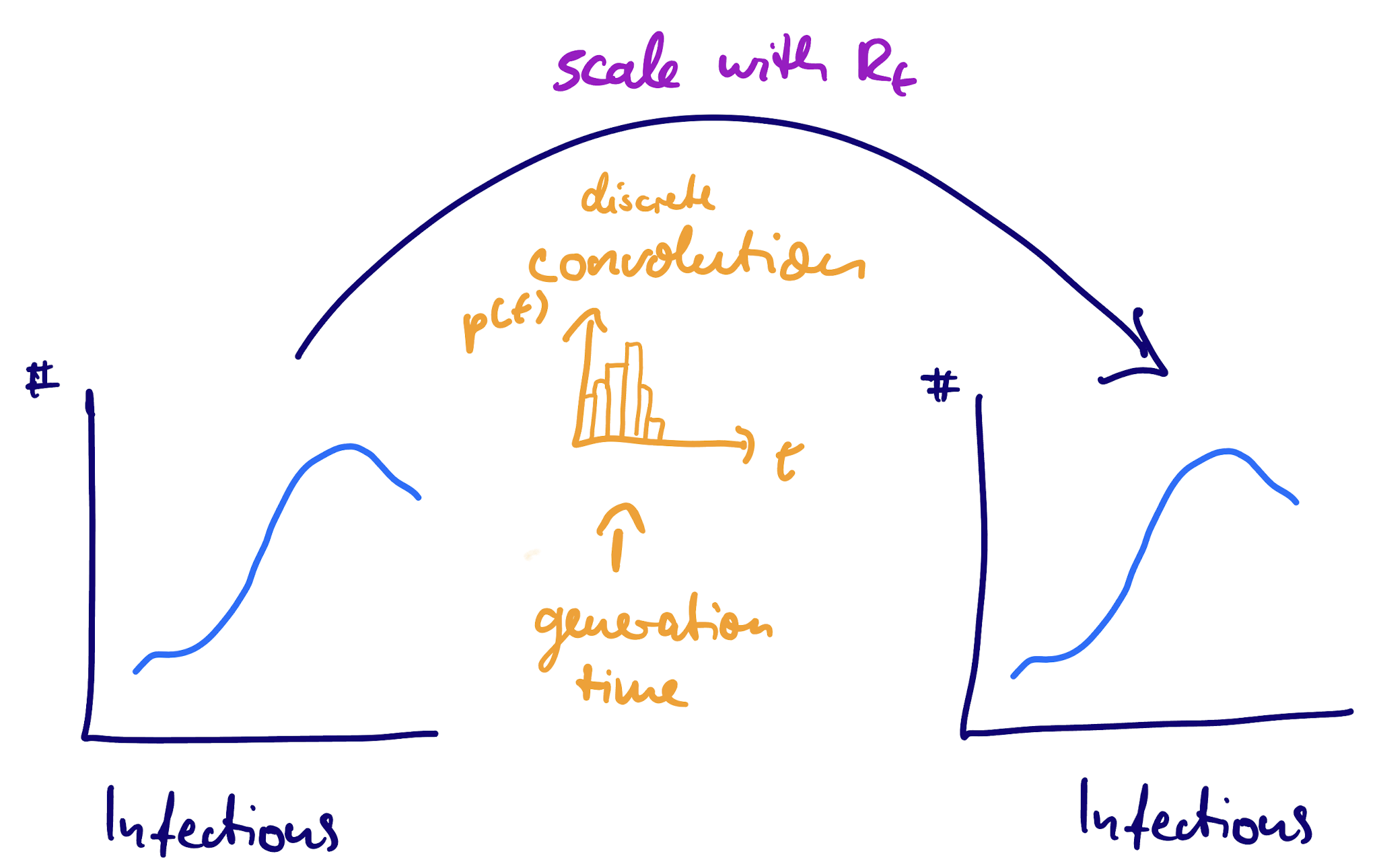functions {
#include "functions/convolve_with_delay.stan"
}
data {
int n; // number of time days
array[n] int obs; // observed onsets
int<lower = 1> ip_max; // max incubation period
// probability mass function of incubation period distribution (first index zero)
array[ip_max + 1] real ip_pmf;
}
parameters {
array[n] real<lower = 0> infections;
}
transformed parameters {
array[n] real onsets = convolve_with_delay(infections, ip_pmf);
}
model {
// priors
infections ~ normal(0, 10) T[0, ];
obs ~ poisson(onsets);
}Introduction to the time-varying reproduction number
Convolution session
Prior for infections at time \(t\) is independent from infections at all other time points. Is this reasonable?
Infections depend on previous infections
Remember the definition of the generation time distribution \(g(t)\):
infection (person A) to infection (person B, infected by A)
Through this, infections depend on previous infections:
\[ I_t = \mathrm{scaling} \times \sum_{t' < t} I_t' g(t - t') \]
What is this scaling?
Scaling of infections with previous infections
Let’s assume we have \(I_0\) infections at time 0, and the scaling doesn’t change in time.
How many people will they go on to infect?
\[ I = \mathrm{scaling} \times \sum_{t=0}^\infty I_0 g(t) = \mathrm{scaling} * I_0 \]
The scaling can be interpreted as the (time-varying) reproduction number \(R_t\).
The renewal equation
If \(R_t\) can change over time, it can still be interpreted as the (“instantaneous”) reproduction number:
\[ I_t = R_t \times \sum_{t' < t} I_t' g(t - t') \]
We can estimate \(R_t\) from a time series of infections using the renewal equation.
The renewal equation as convolution

Your Turn
- Simulate infections using the renewal equation
- Estimate reproduction numbers using a time series of infections
- Combine with delay distributions to jointly infer infections and R from a time series of outcomes
Introduction to the time-varying reproduction number